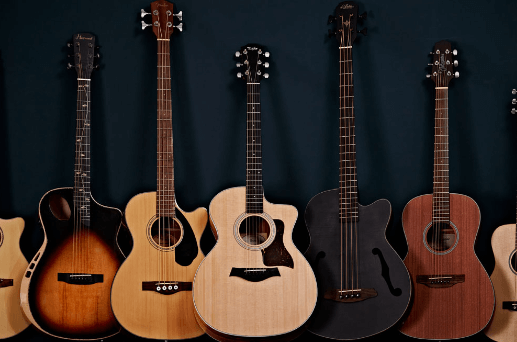Types of Guitars: Exploring the Versatile Voices of the Six-Stringed Icon

The guitar is one of the most iconic instruments, evolving over centuries and adapting to countless musical genres. Each type of guitar offers unique tonal qualities and characteristics, shaping the soundscapes of everything from classical compositions to rock anthems. Here’s a look at some of the most popular types of guitars and their distinct contributions to music.
1. The Classical Guitar: A Timeless Sound
The classical guitar, often called the “Spanish guitar,” has nylon strings and is primarily used in classical, flamenco, and folk music. Known for its warm, mellow tone, the classical guitar is designed to be played fingerstyle, offering precision and expressiveness ideal for melodic and harmonic compositions. This instrument laid the groundwork for many variations in acoustic guitar design and technique worldwide, from the Flamenco guitar in Spain to the Brazilian viola caipira.
See also: What Makes Life Seem Mundane on Social Media?
2. The Bass Guitar: The Rhythmic Foundation
The bass guitar, or simply the bass, plays a crucial role in nearly all music genres by providing a low-end rhythm that anchors the music. With four to six strings and tuned an octave below the standard guitar, the bass’s deep tones drive rhythm sections in jazz, rock, funk, and more. Both acoustic and electric bass guitars exist, with electric basses often favored for their clarity and power when paired with amplifiers in live performances.
3. The Electric Guitar: Icon of Modern Music
The electric guitar transformed 20th-century music, becoming synonymous with rock, blues, and jazz. With its magnetic pickups and amplified sound, this guitar introduced distortion, effects, and feedback into music, allowing artists to experiment with new textures and techniques. Legends like Jimi Hendrix and Eric Clapton popularized the electric guitar’s expressive capabilities, turning it into a symbol of rebellion and creativity. The electric guitar’s impact on music culture is unparalleled, setting the stage for new genres and performance styles.
4. The Acoustic-Electric Guitar: Versatile and Adaptive
Acoustic-electric guitars blend the natural tone of acoustic guitars with the amplification and effects of electric instruments. These hybrid guitars are perfect for live performances, allowing musicians to play acoustically or amplify their sound without sacrificing tonal quality. This adaptability makes them popular in genres like folk, pop, and rock, where artists seek a balance between organic and amplified sounds.
5. Specialty Guitars: Unique Additions to the Guitar Family
The guitar family also includes various specialty guitars like the twelve-string guitar, which provides a fuller, chorus-like sound due to its doubled strings, and the resonator guitar, often used in blues and bluegrass for its metallic tone. These specialty guitars bring unique textures and enhance the instrument’s versatility across genres, adding new layers to traditional music forms and contemporary experimentation.
Conclusion: The Enduring Legacy of the Guitar
Each type of guitar contributes uniquely to music, from the classical guitar’s grace to the electric guitar’s raw power. The guitar’s adaptability and capacity for innovation continue to inspire musicians and audiences alike. At events like MDLBEAST’s Soundstorm, where genres blend and boundaries are pushed, the guitar remains a celebrated symbol of music’s limitless potential. As artists keep exploring the guitar’s expressive range, this six-stringed star is certain to play a defining role in the future of music.



